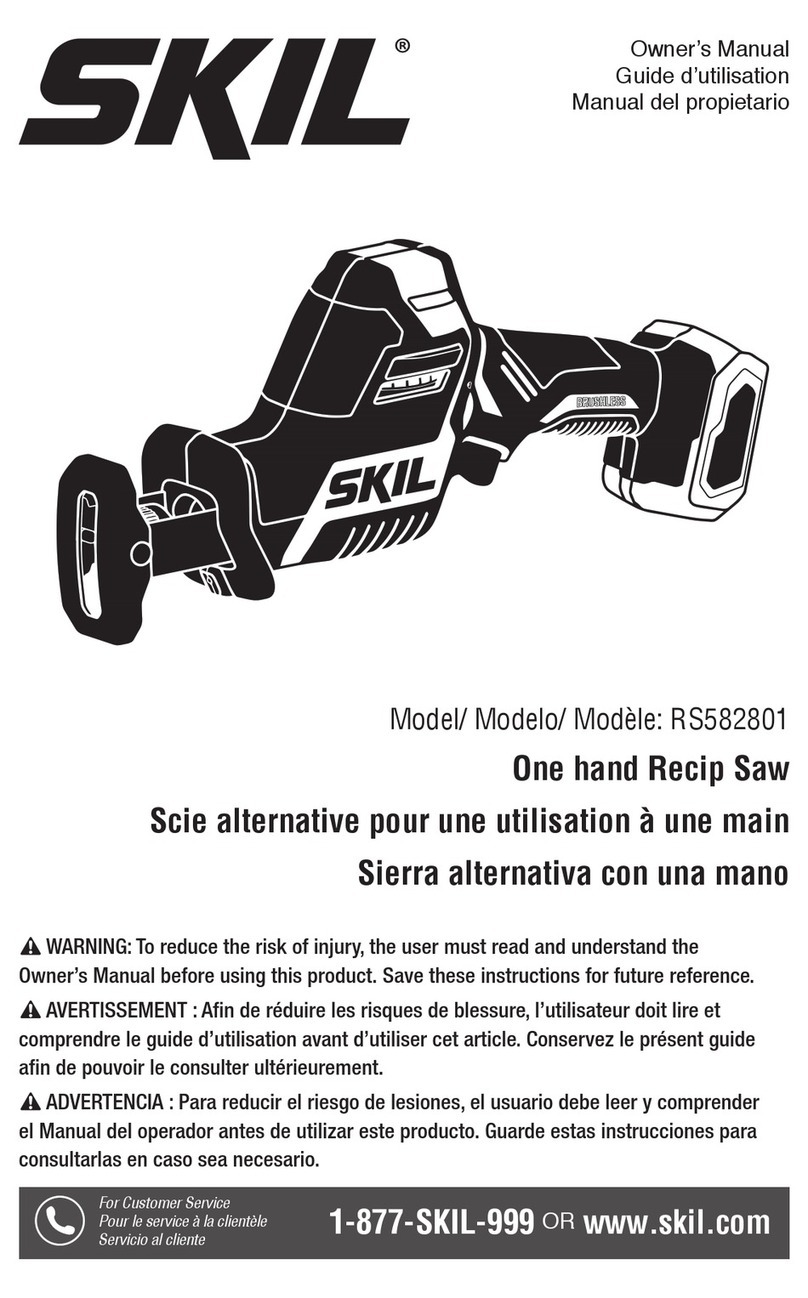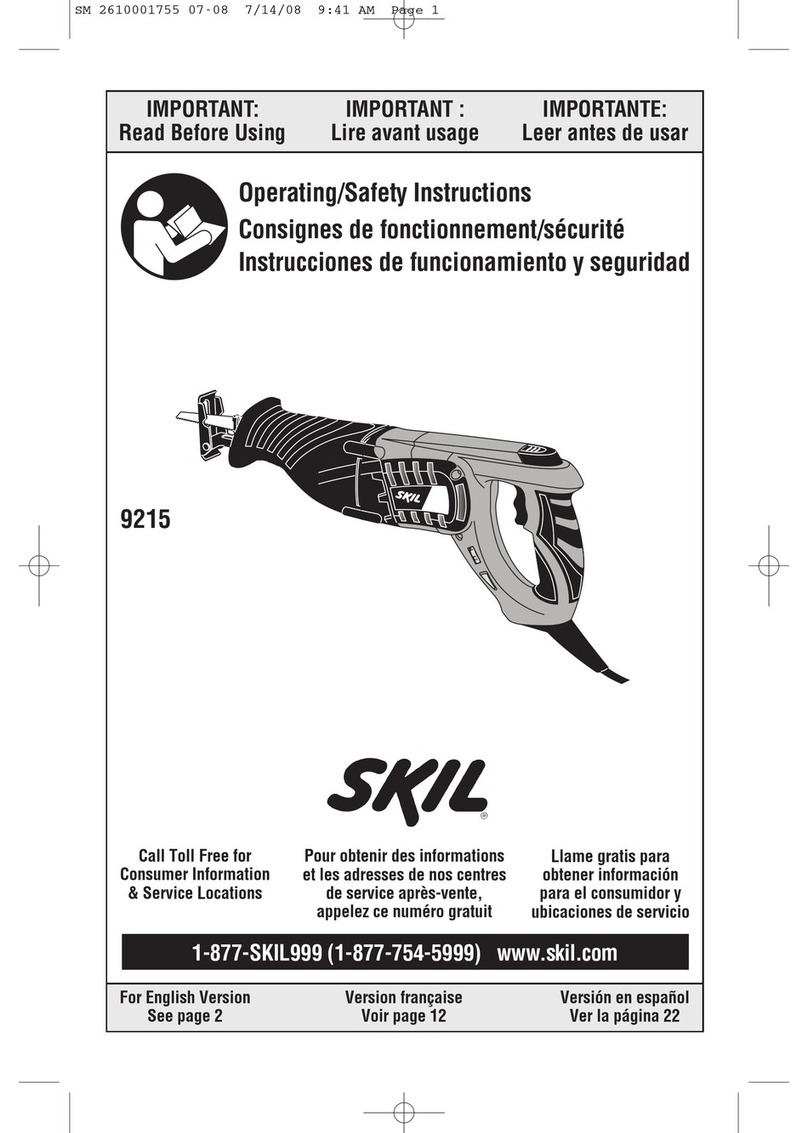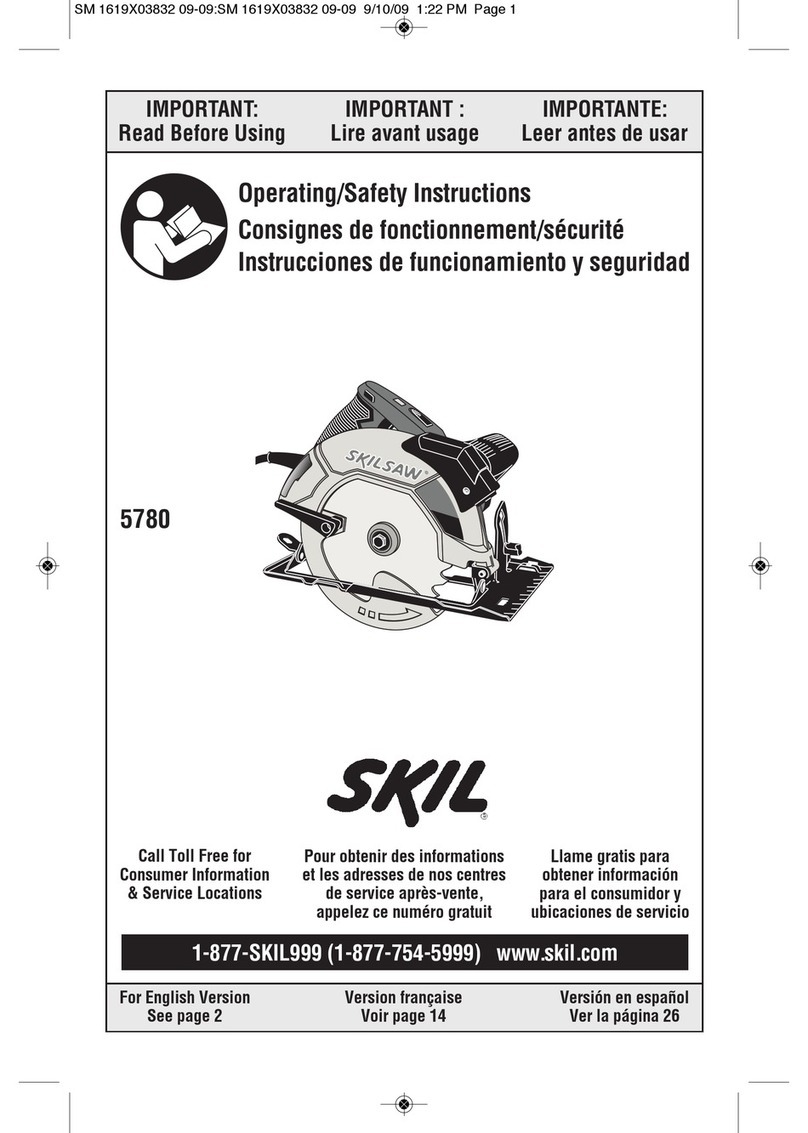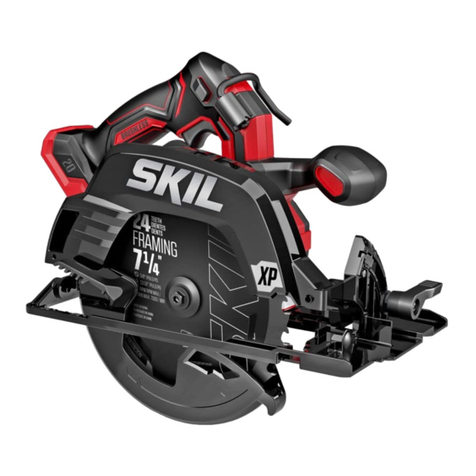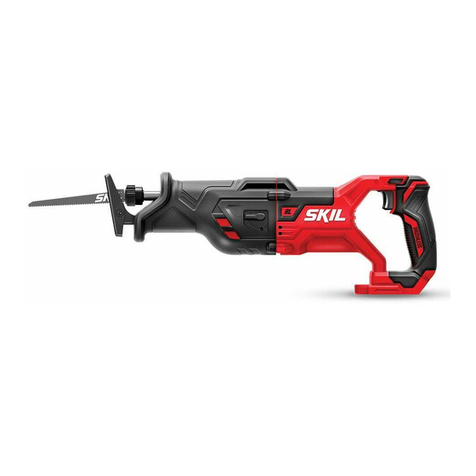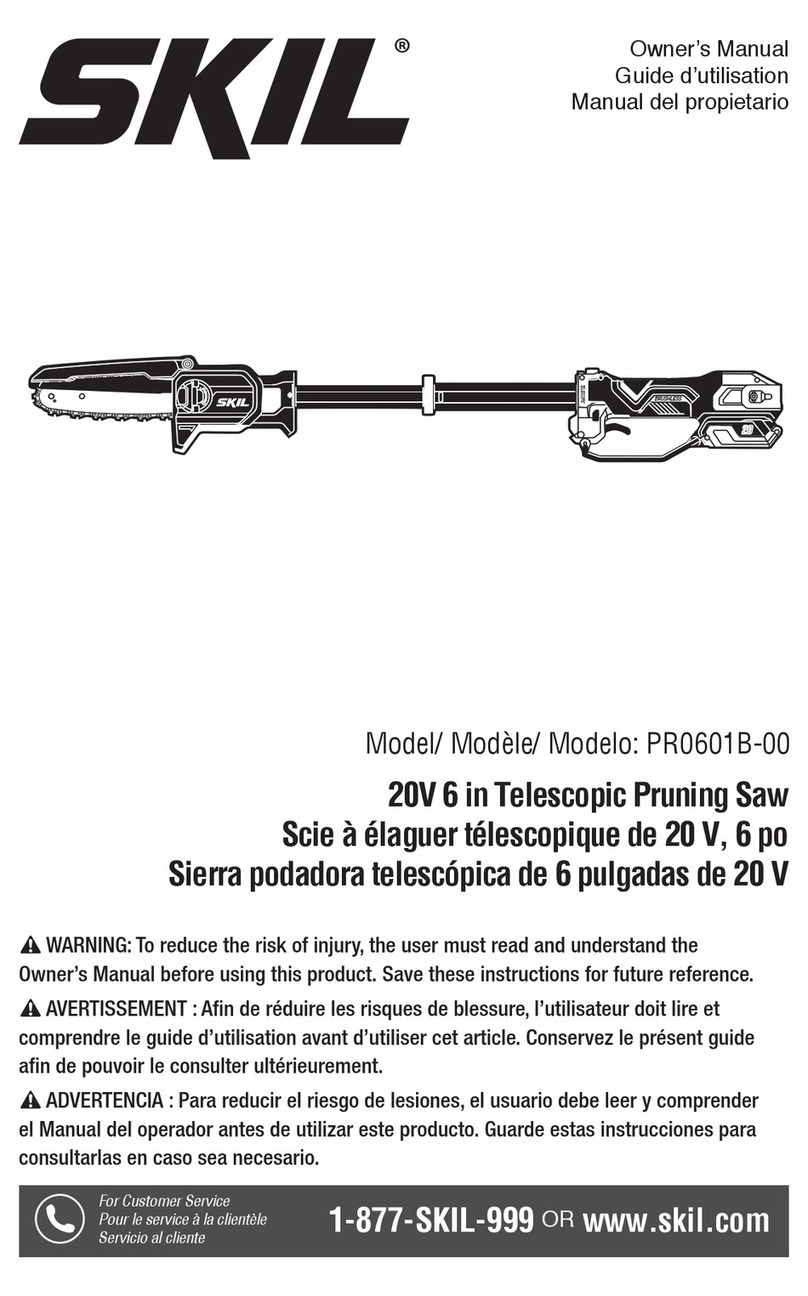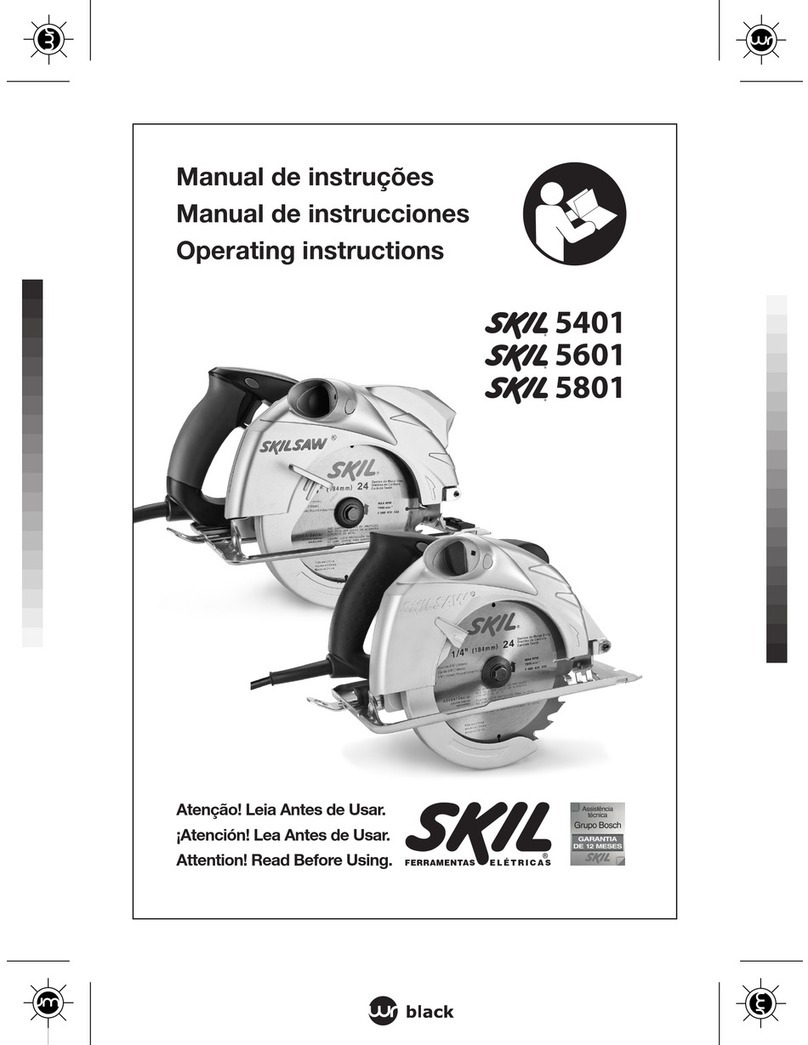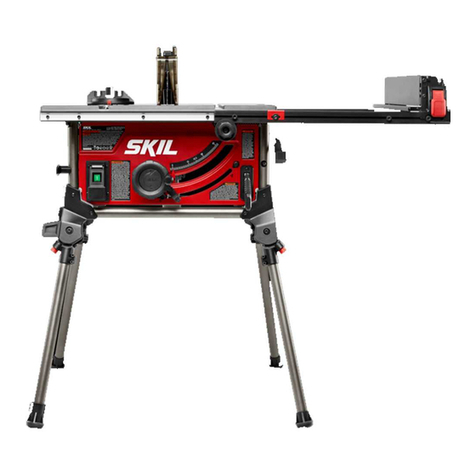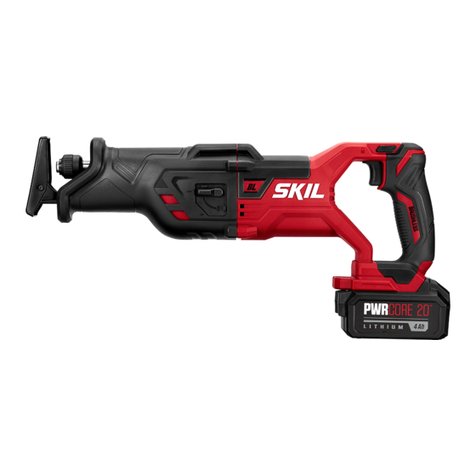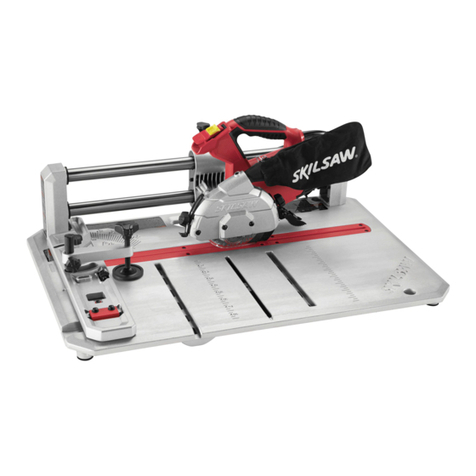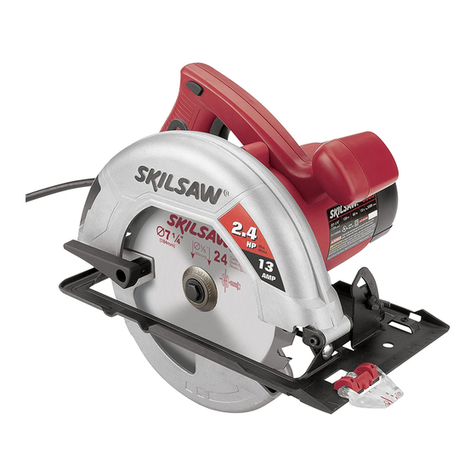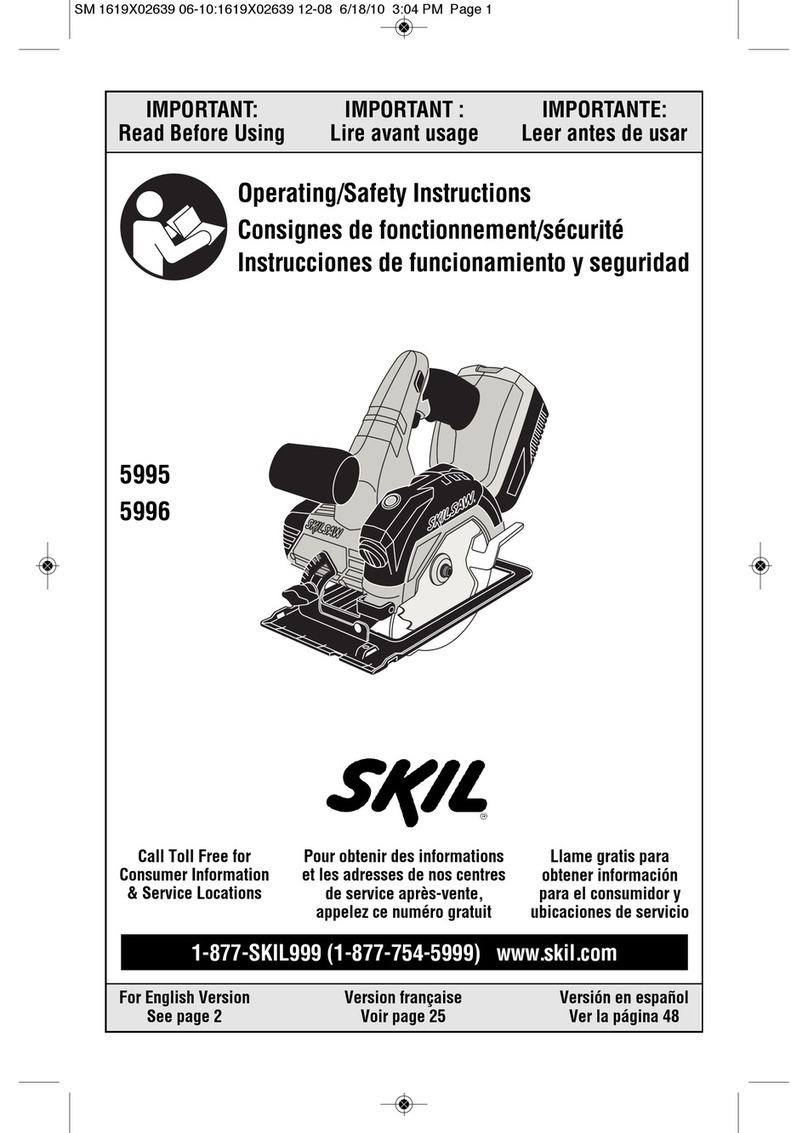
3
GENERAL POWER TOOL SAFETY WARNINGS
WARNING Read all safety warnings, instructions, illustrations and specications
provided with this power tool. Failure to follow all instructions listed
below may result in electric shock, re and/or serious injury.
SAVE ALL WARNINGS AND INSTRUCTIONS FOR FUTURE
REFERENCE.
The term “power tool” in the warnings refers to your mains-operated (corded) power tool or
battery-operated (cordless) power tool.
Work area safety
Keep children away. Do not let visitors contact tool or extension cord. All visitors should be
kept safe distance from work area.
Keep work areas clean. Cluttered areas and benches invite accidents.
Make workshop child-proof. With padlocks, master switches, or by removing starter keys.
Avoid dangerous environments. Don’t use power tools in damp or wet locations. Keep
work area well lit. Do not expose power tools to rain. Do not use the tool in the presence of
ammable liquids or gases.
Personal safety
Know your power tool. Read and understand the owner’s manual and labels afxed to the
tool. Learn its application and limitations as well as the specic potential hazards peculiar to
this tool.
Don’t overreach. Keep proper footing and balance at all times.
Stay alert. Watch what you are doing. Use common sense. Do not operate tool when you are
tired. Do not operate tool while under inuence of drugs, alcohol, or medication.
Wear proper apparel. Do not wear lose clothing, gloves, neckties, rings, bracelets, or other
jewelry which may get caught in moving parts. Nonslip footwear is recommended. Wear
protective hair covering to contain long hair.
Always use safety glasses. Also use face or dust mask if cutting operation is dusty, and ear
plugs during extended periods of operation. Everyday eyeglasses have only impact resistant
lenses, they are NOT safety glasses.
Guard against electric shock. Prevent body contact with grounded surfaces. For example:
pipes, radiators, ranges, refrigerator enclosures.
Disconnect tools from power source. When not in use, before servicing, when changing
blades, bits, cutters, etc.
Keep guards in place. In working order, and in proper adjustment and alignment.
Remove adjusting keys and wrenches. When not in use, before servicing, when changing
blades, bits, cutters, etc.
Reduce the risk of unintentional starting. Make sure the switch is in the “OFF” position
before plugging in tool.
Ground all tools. This tool is equipped with an approved 3-conductor cord and a 3-prong
grounding type plug to t the proper grounding type receptacle. The green conductor in the
cord is the grounding wire. Never connect the green wire to a live terminal.
Never stand on tool or its stand. Serious injury could occur if the tool is tipped or if the
cutting tool is accidentally contacted. Do not store materials on or near the tool such that it is
necessary to stand on the tool or its stand to reach them.




